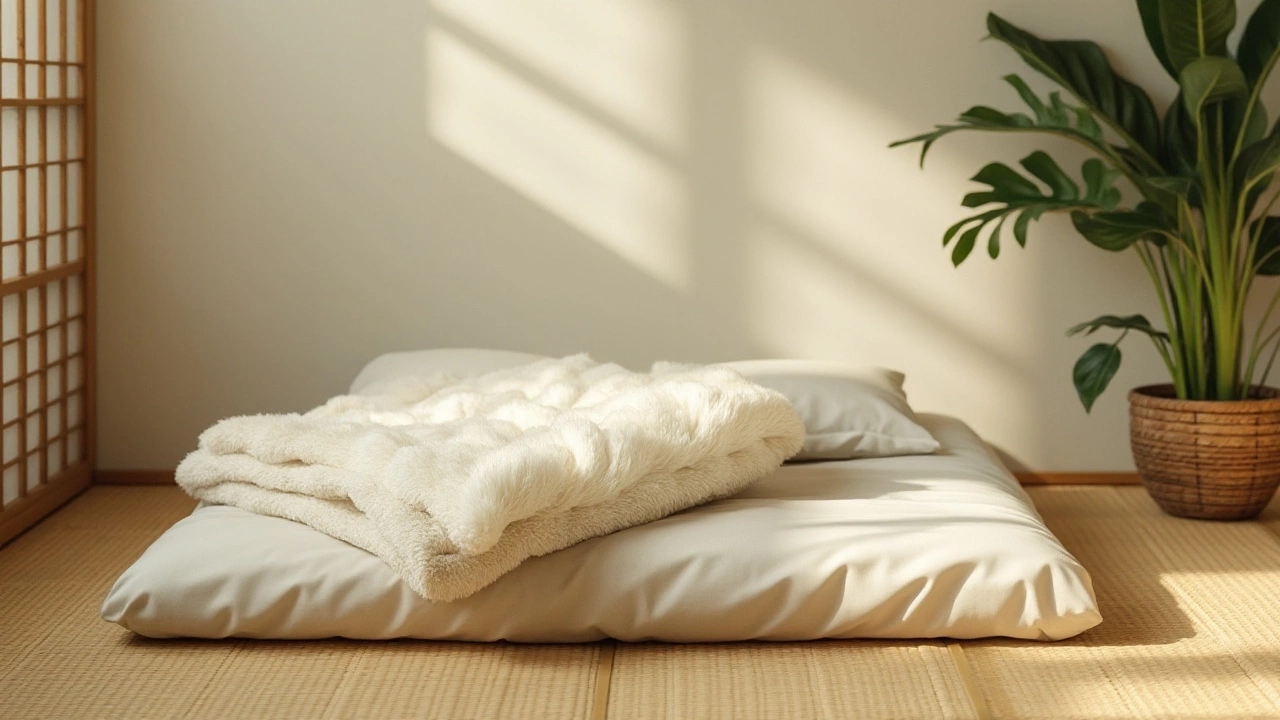Japanese Bedding: Tradition, Comfort, and Modern Tips
When working with Japanese bedding, a traditional sleeping system that uses a thin mattress and a floor mat to create a low‑profile sleep surface. Also known as futon, it has been used for centuries across Japan. Today many people swap a heavy bed for this simple setup because it saves space and can improve sleep quality.
The core piece of Japanese bedding is the futon, a flexible, cotton‑filled mattress that folds and can be stored in a closet during the day. It comes in two main varieties: the thin shikibuton that rests directly on the floor, and the thicker kakebuton used as a cover. A futon’s attributes include breathability, easy cleaning, and the ability to air‑out on a sunny balcony, which helps keep it fresh and firm.
How the Tatami Mat Shapes the Experience
Another essential element is the tatami mat, a woven straw or foam mat that provides a firm yet slightly cushioned base for sleeping. Tatami is traditionally measured in ken (about 1.8 m) and often defines the size of a Japanese room. Its natural fibers regulate humidity, making it comfortable year‑round, and it adds a subtle scent that many associate with calmness.
When you pair a futon with a tatami, you get a sleep system that encourages proper spinal alignment. The firm base prevents the body from sinking too deep, while the thin futon offers enough give to relieve pressure points. This combination also reflects the broader Japanese sleep culture, a lifestyle that values minimalism, natural materials, and a close connection to the floor. People who adopt this style often report feeling more grounded and sleeping more soundly.
Modern homes adapt Japanese bedding in several ways. Some replace the full tatami with a low‑pile rug that mimics the feel, while others keep a traditional mat in a dedicated sleeping corner. A popular variant is the shikibuton, a thin futon placed directly on the floor or on a tatami. The shikibuton’s attributes include quick drying, portability, and the ability to fold away for daytime use, which suits small apartments or multi‑purpose rooms.
Beyond the bedroom, Japanese bedding influences other interior choices. Light, neutral colors on walls and curtains echo the calm aesthetic of a tatami room. Storage solutions like low‑profile drawers slide under the futon, keeping the floor clear and preserving the minimalist vibe. Even the choice of lighting—soft, warm LEDs—complements the gentle glow that traditional paper lanterns once provided.
Whether you’re curious about space‑saving furniture, want to try a healthier sleep posture, or simply love the clean look of a Japanese‑style room, the posts below will walk you through practical steps. You’ll find guides on selecting the right futon firmness, caring for tatami mats, and blending Japanese bedding with modern décor, giving you a clear path to bring this timeless tradition into your home.
Understanding the Differences Between Shikibuton and Kakebuton for Sofa Beds
Japanese bedding has piqued the interest of many due to its minimalistic design and comfort. Shikibuton and Kakebuton are two essential components often confused for one another. Shikibuton, a type of mattress, and Kakebuton, resembling a comforter, serve different purposes. This article unravels their distinct features and offers insights into their use and benefits.
full article




